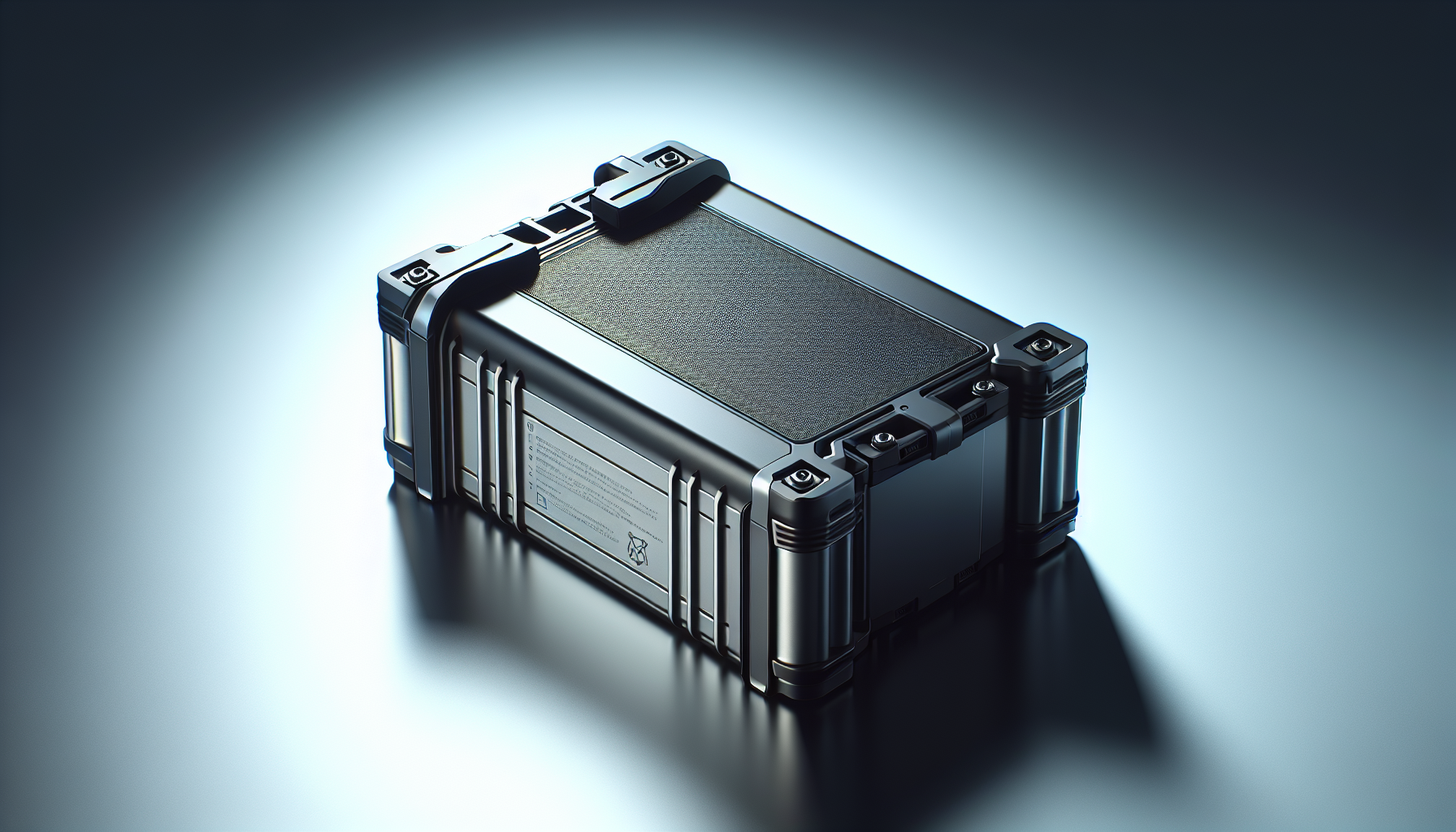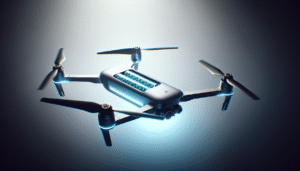At some point, many people find themselves looking at a drone battery,ondering how best to keep it safe during your travels? If you’ve ever asked yourself this question, you’re not alone. As a drone enthusiast, the thrill of catching a stunning aerial view is often balanced by quite a few logistics, and one of the most critical factors is battery safety. These tiny powerhouses can be both a blessing and a curse, especially when it comes to travel and transport. Understanding how to safely handle and transport your drone battery can make all the difference in both longevity and peace of mind. So let’s embark on this journey together and decode the mysteries of drone battery safety.

Understanding Drone Batteries
Drone batteries are the lifeblood of these airborne gadgets. Without them, drones would be amusing paperweights rather than buzzing marvels of technology. Generally, drones are powered by Lithium Polymer (LiPo) batteries, which are known for their ability to store a large amount of energy in a small space. But this energy density also means they need careful handling. LiPo batteries require specific attention and care to ensure they last long and remain safe to use.
Types of Drone Batteries
While LiPo batteries are the most common, other types include Nickel-Cadmium (NiCd) and Lithium-Ion (Li-ion) batteries. Each comes with its own set of characteristics and quirks.
| Battery Type | Characteristics | Common Use Cases |
|---|---|---|
| LiPo | Lightweight, high energy density, sensitive to overcharging and physical damage | Most hobby and professional drones |
| Li-ion | Heavier than LiPo, stable, longer life cycles, less energy density | Some commercial drones and electronics |
| NiCd | Heavy, less energy density, robust, handles temperature extremes | Rarely used in modern drones |
Understanding these types helps us appreciate the importance of maintaining them correctly and handling them safely during transit.
The Importance of Proper Battery Care
Why is battery care so important, you might wonder? It goes beyond just ensuring your drone stays in the sky for that perfect shot. Correct battery maintenance prevents potential hazards, such as leaking or even exploding, which can occur if they’re mistreated. Moreover, proper care extends the life of your battery, saving you money in the long run. It also reduces the risk of sudden power failures, which can lead to drone crashes.
Pre-Travel Preparations
Now, let’s chat about getting ready to travel with your drone batteries. Whether you’re heading across town or flying to another continent, preparation is key. Imagine arriving at your destination, only to discover your battery is damaged or unsafe to use. That’s certainly an adventure spoiler. So, what steps can we take before traveling to ensure our batteries are ready and safe?
Battery Health Check
Before packing up for any trip, a thorough battery health check is essential. This involves inspecting them for any signs of wear or damage. Look out for any swelling, leaks, or unusual odors. Additionally, check the voltage and charge level. A battery with inconsistent voltage or that cannot hold a charge might be unsafe for travel and should be replaced.
Charging to the Right Level
The ideal charge level for travel is usually between 30% to 50%. Fully charged batteries can pose a higher risk during transport, and the mid-range charge is enough for safe storage without losing significant energy. It’s like packing just the essentials for a trip – no more, no less.
Packing Your Batteries
Packing is an art, especially when it involves items as sensitive as drone batteries. They should be packed in their original packaging, if possible, or in a specialized battery safety bag. These bags are designed to contain any potential fire or heat. It’s as if you’re wrapping a precious, albeit potentially prickly, gift.
Flying with Drone Batteries
If drone batteries had a phobia, it might very well be of airplanes. Despite their uneasiness with cabin pressure changes, it’s entirely possible—and legal—to fly with them. Yet, this requires careful adherence to airline regulations to ensure safety.
Understanding Airline Regulations
Airline regulations often focus on battery size, measured in watt-hours (Wh). Most airlines allow you to carry batteries of up to 100Wh without any special permissions. However, you can bring up to two spare batteries per person, between 100Wh and 160Wh, with airline approval. Anything beyond that may need special permission and handling.
Here’s a quick reference guide for carrying drone batteries on flights:
| Battery Capacity | Allowed in Carry On | Allowed in Checked Luggage |
|---|---|---|
| ≤ 100 Wh | Yes | No |
| 100-160 Wh | Yes (max 2 spares) | No |
| > 160 Wh | No | No |
Always double-check with your airline, as some have specific requirements or restrictions.
Security Checkpoint Tips
Going through security can feel like a mini-game of “How Many Rules Can I Remember?” When you reach the security checkpoint, be prepared to remove the batteries from their case for inspection. It’s also helpful to inform the security officials about the batteries—they appreciate the heads-up and might even thank you with a nod of approval.
In-flight Tips for Battery Safety
Once you’ve successfully boarded your flight, a couple of extra tips will keep your batteries safe. Keep them in a pressurized cabin, preferably in your carry-on. Avoid using the battery during the flight and ensure it’s stored away from direct sunlight or heat sources. Think of this as giving your batteries a cozy cocoon for their in-flight slumber.

Traveling by Land or Sea
Drone batteries adapt quite well to travel by land or sea, but that doesn’t mean we can overlook safety precautions. Much like a road trip playlist, planning is vital.
Road Travel Safety
When traveling by road, ensure your batteries are stored away from heat sources and direct sunlight, perhaps in a cool, shaded section of your vehicle. This prevents overheating, which is like a sunburn for batteries — painful and damaging.
Sea Travel Precautions
For sea travel, moisture is the main concern. Use waterproof cases to store your batteries and reduce exposure to salty sea air. It’s akin to wrapping your batteries in a raincoat, keeping them dry and comfortable amidst potential humidity.
Storing Drone Batteries When Traveling
You may not always use your drone immediately after reaching your destination, and storing it properly is crucial during these downtimes.
Choosing the Right Storage Location
Select a cool, dry place free from extreme temperatures and humidity. Storage in a place that’s ground level or in a secure area is also advisable. It’s like finding a comfy hotel room for your batteries — you want them to be safe, comfortable, and ready for action.
Routine Battery Checks
Much like checking in with your travel companions, routinely check your stored batteries for signs of damage. This includes looking for leaks, swelling, or drops in charge that indicate they’re not in top health.
Post-Travel Battery Care
Once your adventure is complete, it’s time to give your batteries a little TLC to prepare them for future journeys.
Battery Inspection Upon Return
After travel, inspect your batteries for any signs of damage incurred during transit. Address any issues immediately, which might include testing the charge or seeking professional repairs or replacements if a battery is damaged.
Reconditioning Your Batteries
Reconditioning involves charging and discharging your batteries a few times to ensure they hold a charge and function properly. It’s like a gentle workout after a holiday feast, gradually bringing things back to optimal conditions.
Troubleshooting Common Drone Battery Issues
Despite all precautions, issues may still arise. Knowing how to handle these common problems can save both time and prevent potential hazards.
Battery Not Charging
This could be due to a malfunctioning charger or a poor connection. Check that everything is plugged in properly and the outlet is functional. If the charger is working but the battery still isn’t charging, it may require professional attention.
Swelling or Physical Damage
Swelling often indicates a problem with the cell structure. It’s a red flag! Immediately stop using the battery and dispose of it properly following local regulations. Ignoring physical damage is akin to ignoring a check engine light—eventually, the problem catches up.
Disposal of Old or Damaged Drone Batteries
Even the best-taken-care-of batteries meet their end, and knowing how to responsibly dispose of them is crucial for safety and environmental reasons.
Safe Disposal Practices
Never throw your batteries in the trash. Instead, seek out designated battery disposal centers or return them to the manufacturer, who can dispose of them properly. This helps prevent environmental harm and reduces the risk of accidents due to leaking or bursts.
Recycling Options
Some areas offer recycling programs specifically for batteries. This not only disposes of them safely but also allows certain components to be reused, aligning with sustainable practices. Recycling is an eco-friendly encore to a battery’s life.
The Joy of Traveling with Drones
Traveling with a drone can enhance your adventures in remarkable ways. By understanding and implementing drone battery safety measures, I can ensure that the joy outweighs the hassles. Embracing these practices allows me to worry less about potential mishaps and focus more on capturing those unforgettable moments from above. It’s about harmonizing safety with the exhilarating prospects of drone-assisted discovery. Whether it’s skimming over turquoise oceans or swooping over snow-capped mountains, with the right preparation, the sky is truly the limit.


